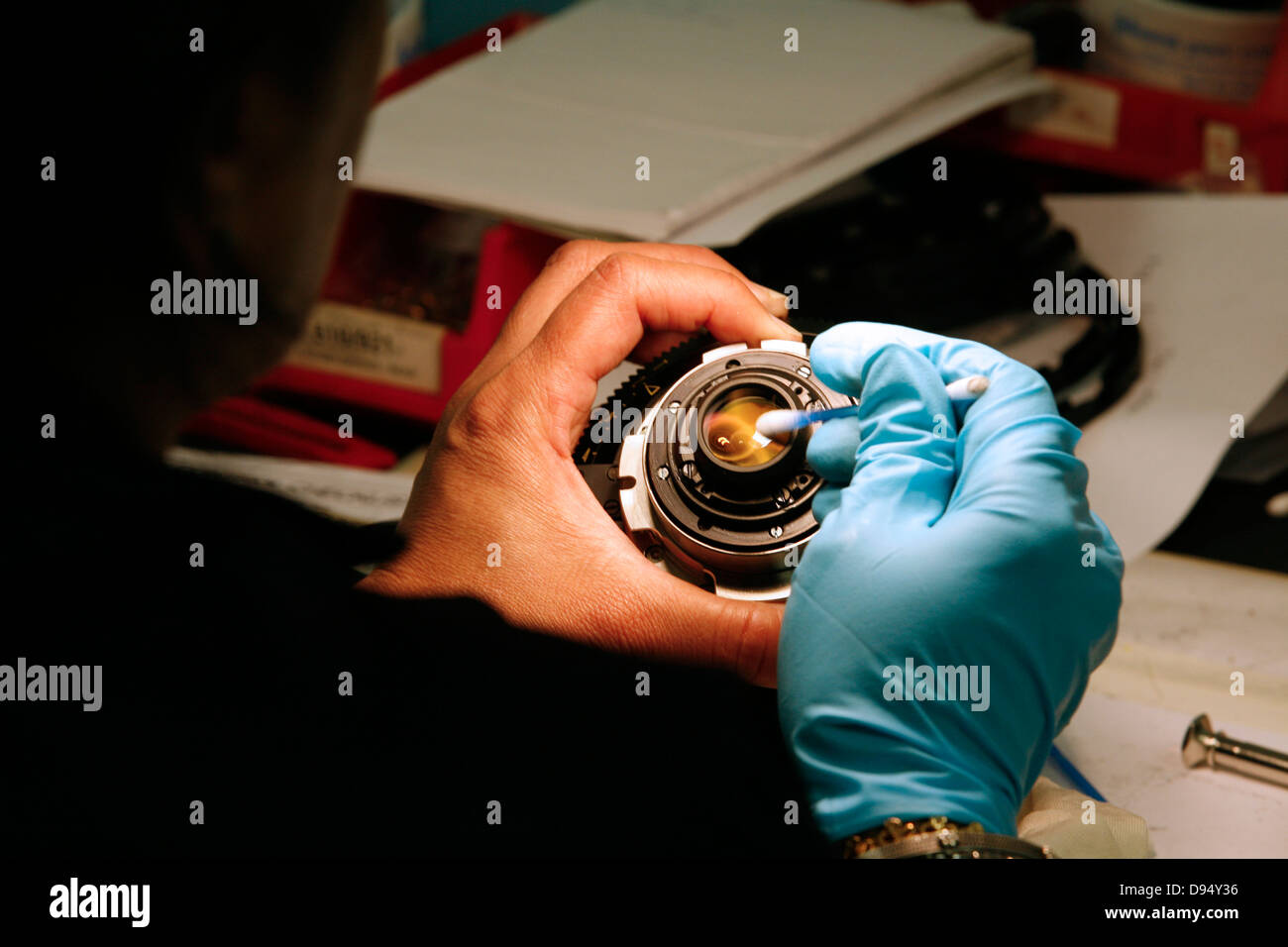Manufacture of Cooke lenses at Cooke Optics Leicester

Image details
Contributor:
Steve Morgan / Alamy Stock PhotoImage ID:
D94Y36File size:
36.4 MB (941 KB Compressed download)Releases:
Model - no | Property - noDo I need a release?Dimensions:
4368 x 2912 px | 37 x 24.7 cm | 14.6 x 9.7 inches | 300dpiDate taken:
2008Location:
Leicester , UKMore information:
Cooke Optics Ltd. is a camera lens manufacturing company based in Leicester, known earlier as Taylor, Taylor and Hobson (TTH) and then Taylor-Hobson. T. S. Taylor, an optician, his brother W. Taylor, an engineer, and a Mr Hobson, a businessman, formed the company in 1886. The name Cooke originally came from the company T. Cooke & Sons of York, a manufacturer of telescopes. The optical manager of that company, H. Dennis Taylor (no relation), devised the Cooke triplet lens in the 1890s. Cooke of York was not interested in the manufacture of camera lenses, and licensed this design and others to TTH. Subsequently many of TTH's own designs, though unconnected with Cooke of York, also carried the Cooke brand. The Cooke triplet lens was also made under licence by Voigtländer and other companies. Throughout the twentieth century TTH produced a series of innovations, and supplied lenses for the (once large) UK camera industry, for photolithography in the printing industry in the USA and UK, and for cinematography. It provided a succession of technical solutions for Hollywood's evolving needs. The company now designs and manufactures 35 mm lenses for the film industry. In a reversion to its previous markets, it has also made limited quantities of the PS945, a redesigned Pinkham and Smith portrait lens, [1] and the Series XVa, a redesigned triple-convertible lens for 10×8 inch format. The company distributes to over 60 countries worldwide and exports 90% of its production. In 2013, the Academy of Motion Picture Arts and Sciences gave the company an award of merit, saying it "helped define the look of motion pictures over the last century, " with innovations over the years that have included zoom lenses for movie cameras and lenses that didn't require bright lights. resulting in lenses that produce what's known in the industry as the "Cooke look" — warm, natural images on the screen.[2]